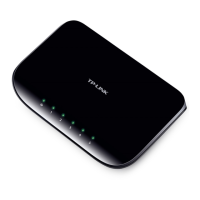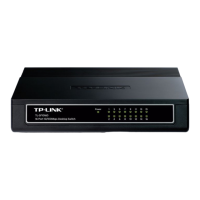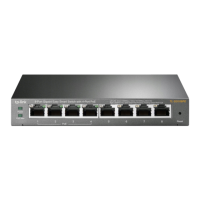User Guide 32
Switching Configuration Examples
2) Choose the menu VLAN > 802.1Q PVID Setting to load the following page. Select port 1,
port 2, port 3 and port 4, and specify the PVID as 2 for the ports. Click Apply.
Figure 5-3 Configuring 802.1Q PVID
3) Choose the menu Switching > IGMP Snooping to load the following page. Enable IGMP
snooping. Click Apply.
Figure 5-4 Configuring IGMP Snooping
5.2 Example for Configuring LAG
5.2.1 Network Requirements
As shown below, hosts and servers are connected to Switch A and Switch B, and heavy
traffic is transmitted between the two switches. To achieve high speed and reliability of
data transmission, you can bundle multiple physical ports into one logical interface. In this
case, we bundle port 1, port 2 and port 3 of both switches into one logical interface.

